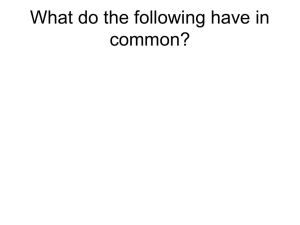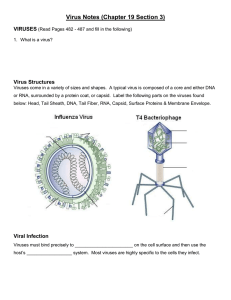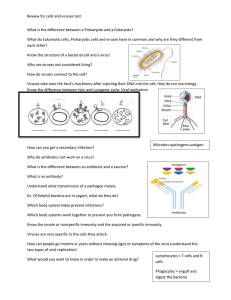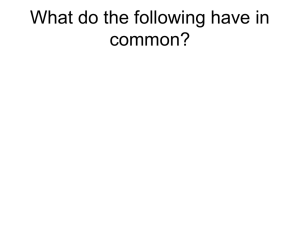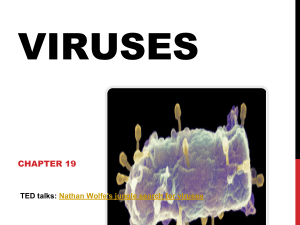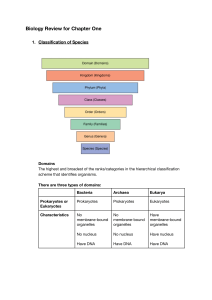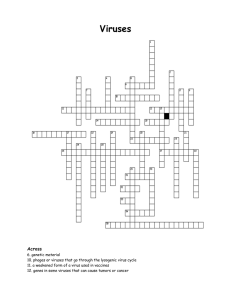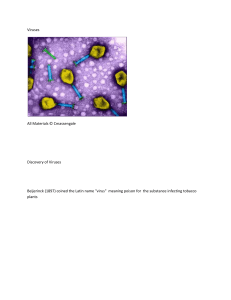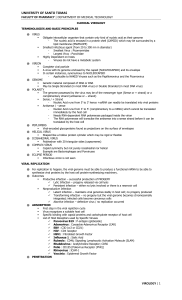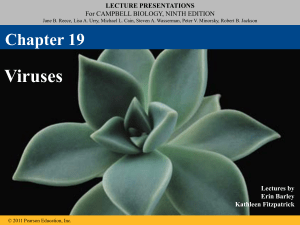Latin for “poison” virus seen with an electron microscope.
advertisement
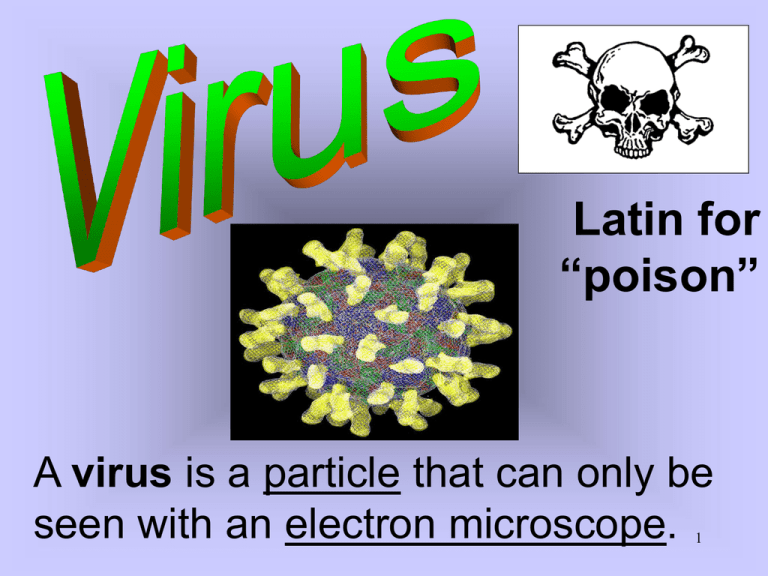
Latin for “poison” A virus is a particle that can only be seen with an electron microscope. 1 Viruses are not cells and are not made-up of cells. They don’t… Contain a nucleus or cytoplasm Eat Grow Carry on respiration Or perform other biological functions 2 A virus is surrounded by a capsid (protein coat) which determines the shape of the virus. The capsid contains nucleic acids (either DNA or RNA). Tail fibers for attachment to host cell. 3 Viruses are classified by: type of host cell presence of DNA or RNA (retroviruses) shape: Binal Polyhedral Filo 4 VIRAL REPLICATION Viruses replicate in one of two ways: • Lytic • Lysogenic 5 Virus attaches to host cell. LYTIC CYCLE Virus injects its DNA Cell lyses (breaks apart) and new viruses are released Virus DNA commands host cell to make new viral parts New viral parts assembled 6 LYSOGENIC CYCLE 7 http://www.howstuffworks.com/virus-human2.htm LYSOGENIC CYCLE • Does not begin immediately • Viral DNA (called a prophage) attaches to the host cell’s chromosomes – lies dormant. • Environmental stimulus sends viral DNA into lytic cycle. 8 VIRAL DISEASES Disease Transmission Symptoms AIDS/HIV Sexual contact; contaminated blood or needles Immune system failure; fatal Common Cold Inhalation, direct contact Sinus congestion, muscle aches, cough, fever Smallpox Inhalation Blisters, lesions, fever, blindness, scars; often fatal Influenza (Flu) Inhalation Headache, muscle ache, sore throat, cough, fatigue, fever, chills Warts Direct contact Lumps on skin or mucus membranes Herpes Direct contact Open sores on mucus membranes 9 Most viruses have NO cure (Influenza, & HIV), but some viruses like Smallpox have vaccines. Vaccines contain a weakened or killed virus that provides immunity to the disease. 10 http://www.learner.org/courses/biology/archive/animations.html http://clearlyexplained.com/culture/health/infections/viruses/anim.html http://www.hybridmedicalanimation.com/anim_avian.html 11

